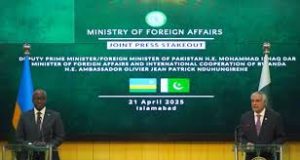Italy: Parma to grow first food forest

Rome: Last week, Parma city authorities and representatives of the civil sector signed a collaboration agreement for the creation of what will be possibly the first urban food forest in Italy.
The collaboration agreement is for a term of three years and aims to define the scope of interaction between the partners in the care and regeneration of common urban goods.
The food forest will be located in the Joan Mirò Park, between via Marconi, via Picasso, via De Chirico and via Sidoli, and keeping up with the ‘Spanish painters’ theme, it will bear the name “Picasso Food Forest”.
The term ‘food forest’ identifies cultivated systems that are inspired by the forest, aimed mainly at the production of food, but also of other products that can be used by humans. A forest does not need pruning, treatments, soil processing or special maintenance; it has a great ability to produce biomass thanks to the dynamic balance between the different components. This same balance is also sought when creating a food forest.
It will be a place that can also be used for educational and participatory purposes, with the involvement of associations, neighbourhood groups, corporate volunteers, and schools. These can collaborate in planting plants, mowing grass, irrigation, creating teaching stations, installing animal shelters, and installing information panels.
The Picasso Food Forest will count with 5,700 square metres and will allow many people to connect with healthy eating habits, learn how to grow their own food and enjoy the special experience of harvesting food directly from a plant in a natural setting.
The history of urban food forests is very recent, and the first projects represent case studies of enormous value, which obtain valuable information on the difficulties encountered, the best practices identified and the results obtained. The Picasso Food Forest represents the first documented case study of an urban public and community food forest in Italy.





